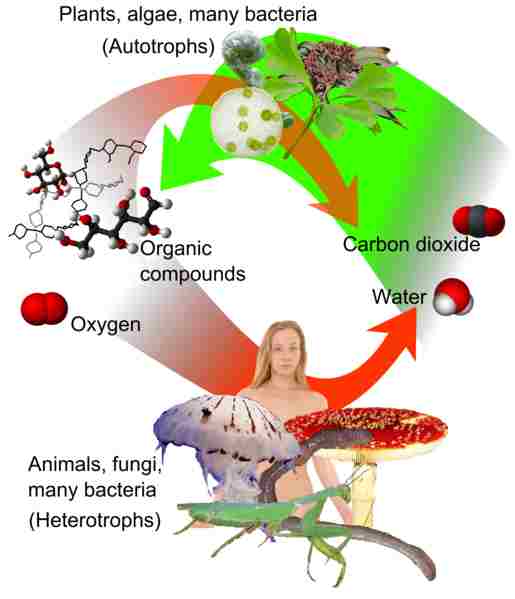5 Examples of Carbon Capture and Storage Explained
Examples of carbon capture and storage are; bioenergy with carbon capture and storage (BECCS), cement-based, gasification-based, steel-based, and synfuel-based carbon capture and storage.
This article discusses the examples of carbon capture and storage, as follows;
1). Bioenergy with Carbon Capture and Storage; BECCS (as one of the Examples of Carbon Capture and Storage)
Bioenergy with carbon capture and storage (BECCS); alternatively referred to as ‘bioenergy with carbon capture, utilization and storage (BECCUS), represents the integration of renewable energy and carbon capture technologies.
All bioenergy facilities, including biorefineries, biomass plants and biofuel-fired power plants, produce carbon emissions in the course of operation [2].
By positioning carbon capture and storage equipment at the exhaust outlet of these facilities, carbon dioxide can be trapped and either injected into geologic formations and oceans for storage, or used as a component in manufacturing or exploration processes.
An arrangement such as this mitigates environmental degradation from bioenergy, in the form of greenhouse emissions and global warming.

2). Cement-based Capture
Cement is vert rich in carbonate material, making it a potential manmade carbon source.
The cement production process involves synthesis of clinker; a nodular material derived from the heating of limestone and other ingredients in a kiln, through a mechanism similar to pyrolysis [5].
The decarbonization of cement manufacturing (and usage) through carbon capture and storage is essential for achieving sustainable development and mitigating climate change [7].
Implementing carbon capture and storage in cement-production facilities also facilitates the growth of other sustainable concepts like smart house development and the construction of solid and flexible structures to control flooding, erosion, and stormwater pollution, by optimizing the impact of construction projects on the environment.
3). Gasification-based Capture (as one of the Examples of Carbon Capture and Storage)
Gasification is a thermo-chemical conversion process that converts materials to fuel, with significant physicochemical changes [4].
Based on the mechanism of gasification, it can be categorized as a waste-to-energy method, aa well as an energy recovery process and a method of biomass conversion.
Feedstock in gasification include fossil fuels like coal, and various forms of biomass such as municipal organic waste and forest residue. The main product is energy, which may be recovered as direct heat, or as stored bioenergy (in a biofuel).
Byproducts of gasification include carbon monoxide, hydrogen, and carbon dioxide [9].
Carbon capture in gasification can be achieved by integrating equipment and reagents for the isolation of carbon dioxide.
Absorption mechanism using quicklime (CaO) can be applied to decarbonize the byproducts of gasification [3]. This optimizes the gasification process by making it more environment-friendly.
4). Steel Plant-based Capture
The steel sector accounts for up to 8% of global greenhouse emissions per year [10].
This includes all anthropogenic processes involving steel and iron, such as mining and construction, processing, and utilization.
Carbon dioxide produced in steel-based processes can be isolated and captured using electrolytic mechanisms [8] among others. The gas can subsequently be used as a raw material for industrial applications.
5). Synfuel-based Capture and Reuse (as one of the Examples of Carbon Capture and Storage)
‘Synfuel’ includes all fuels produced from manmade processes like pyrolysis, anaerobic digestion, and gasification.
Synfuel-based carbon capture is a sustainable practice which aligns with circular economic concepts like resource management and recycling. This is because carbon dioxide is produced at all stages in the lifecycle of synfuels, including their production and combustion.
Production of synfuel involves hydrogen and carbon dioxide as essential reactants [1], and these two are produced (in form of water, carbon dioxide, and carbon monoxide) from the combustion of synfuel. It implies that carbon capture and storage in synfuel systems is a cyclic process that can be carried out with significant sustainability and energy conservation.
In cases where the captured CO2 is not recycled to produce more synfuel or used for other purposes, it can be stored by injection into oceans or underground formations.
Alternatively, the CO2 can be injected into recovery wells for Enhanced Oil Recovery (EOR) [6].
Conclusion
Examples of carbon capture and storage are;
1. Bioenergy with Carbon Capture and Storage; BECCS
2. Cement-based Capture
3. Gasification-based Capture
4. Steel Plant-based Capture
5. Synfuel-based Capture and Reuse
References
1). Becker, W.; Penev, M.; Braun, R. J. (2019). “Production of Synthetic Natural Gas From Carbon Dioxide and Renewably Generated Hydrogen: A Techno-Economic Analysis of a Power-to-Gas Strategy.” Journal of Energy Resources Technology, Transactions of the ASME 141:021901. Available at: https://doi.org/10.1115/1.4041381. (Accessed 3 October 2022).
2). Kajaste, R. (2014). “Chemicals from biomass – Managing greenhouse gas emissions in biorefinery production chains – A review.” Journal of Cleaner Production 75:1–10. Available at: https://doi.org/10.1016/j.jclepro.2014.03.070. (Accessed 3 October 2022).
3). Kenarsari, S. D.; Zheng, Y. (2014). “CO2 capture using calcium oxide under biomass gasification conditions.” Journal of CO2 Utilization 9. Available at: https://doi.org/10.1016/j.jcou.2014.11.001. (Accessed 3 October 2022).
4). Kumar, S.; Snehesh, S.; Dasappa, S. (2011). “Carbon dioxide capture through biomass gasification.” Proceedings of the 19th European Biomass conference and Exhibition, Berlin, Germany. Available at: https://www.researchgate.net/publication/263442956_Carbon_dioxide_capture_through_biomass_gasification. (Accessed 2 October 2022).
5). Mohsen, M. M. (2015). “Cement Manufacturing.” Available at: https://doi.org/10.13140/RG.2.1.3461.0003. (Accessed 3 October 2022).
6). Parker, M. E.; Meyer, J. P.; Meadows, S. R. (2009). “Carbon Dioxide Enhanced Oil Recovery Injection Operations Technologies.” Energy Procedia 1(1):3141-3148. Available at: https://doi.org/10.1016/j.egypro.2009.02.096. (Accessed 3 October 2022).
7). Plaza, M. G.; Martínez, S.; Rubeira, F. (2020). “CO2 Capture, Use, and Storage in the Cement Industry: State of the Art and Expectations.” Energies 13(21):5692. Available at: https://doi.org/10.3390/en13215692. (Accessed 30 October 2022).
8). Ren, J.; Lau, J.; Lefler, M.; Licht, S. (2015). “The Minimum Electrolytic Energy Needed To Convert Carbon Dioxide to Carbon by Electrolysis in Carbonate Melts.” The Journal of Physical Chemistry C 119(41):151002101536009. Available at: https://doi.org/10.1021/acs.jpcc.5b07026. (Accessed 3 October 2022).
9). Stasiek, J.; Barański, J.; Jewartowskin M., Wajs, J. (2021). “Gasification of Densified Biomass (DB) and Municipal Solid Wastes (MSW) Using HTA/SG Technology.” Processes 9(12):2178. Available at: https://doi.org/10.3390/pr9122178. (Accessed 3 October 2022).
10). Tian, S.; Jianguo, J.; Zhang, Z.; Manovic, V. (2018). “Inherent potential of steelmaking to contribute to decarbonisation targets via industrial carbon capture and storage.” Nature Communications 9(1). Available at: https://doi.org/10.1038/s41467-018-06886-8. (Accessed 2 October 2022).




